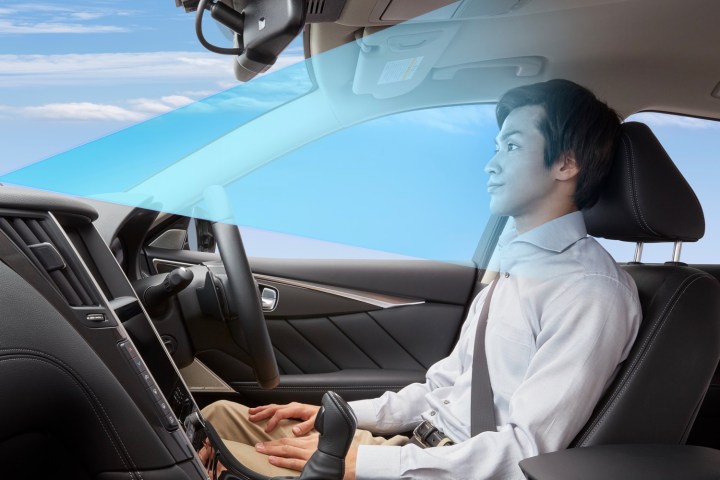
Nissan is introducing a new version of its ProPilot Assist driver-assist system in Japan that marks a big step forward in automation. The current version of ProPilot Assist is basically adaptive cruise control with a lane-centering feature, but Nissan claims the new system — dubbed ProPilot 2.0 — allows for “hands-off” driving on highways.
ProPilot 2.0 is designed to work only on highways, similar to Tesla’s Autopilot and Cadillac’s Super Cruise systems. It has the capability to follow a route set in the car’s navigation system from on-ramp to off-ramp. Once the car reaches the off-ramp, the driver must retake full control. On the highway, though, Nissan claims drivers can take their hands off the wheel while the car cruises in a single lane. Drivers must still pay attention and be ready to retake the wheel at all times, Nissan noted. A driver-facing camera checks for signs of distraction. It’s a sensible precaution, given the antics some Tesla owners have gotten into with Autopilot. Systems like these may take some of the workload, but they do not allow cars to drive themselves.
Using ProPilot 2.0 starts with entering a destination into the navigation system before setting off. Once the car reaches a stretch of highway where the system can be used, it alerts the driver with audio and visual cues. The driver activates ProPilot 2.0 by flipping a switch. The system will then keep the car centered in its lane at a safe distance from the car in front, while cruising at a speed set by the driver.
The system can’t initiate passing maneuvers on its own, but it can tell the driver when it thinks passing a slower car is a good idea. The driver then must place their hands on the steering wheel and flip a switch to initiative the pass, then repeat the process to get the car back into its original lane once the maneuver is complete. ProPilot 2.0 handles the actual acceleration, braking, and steering. Drivers can also tell the system to overtake another car by placing their hands on the wheel and flicking the turn signal stalk.
As with other driver-assist systems, ProPilot 2.0 requires an array of sensors to function. The system uses a combination of cameras, sonar, and radar to “see” its surroundings, as well as GPS and 3D map data to navigate, according to Nissan.
ProPilot 2.0 launches in Japan this fall on the Nissan Skyline, a sedan that’s sold in the United States as the Infiniti Q50. Nissan hasn’t discussed plans to offer the system in the United States, but it may become available here sometime after the Japanese-market launch. The current version of ProPilot launched in Japan in 2016 and was later rolled out in the U.S. as well. It’s currently available on the Nissan Rogue, Rogue Sport, Leaf, and Altima.


